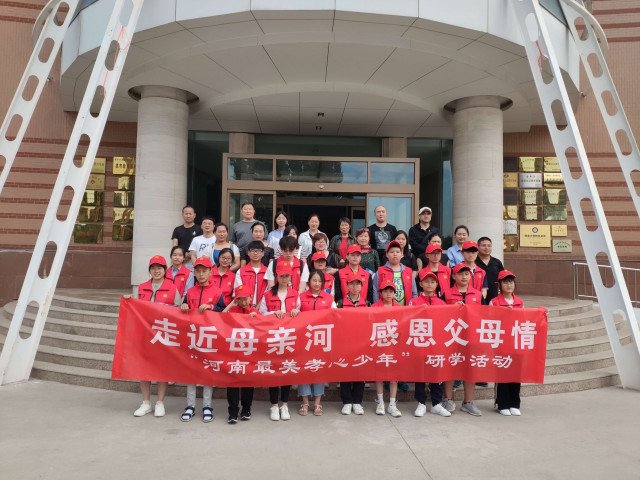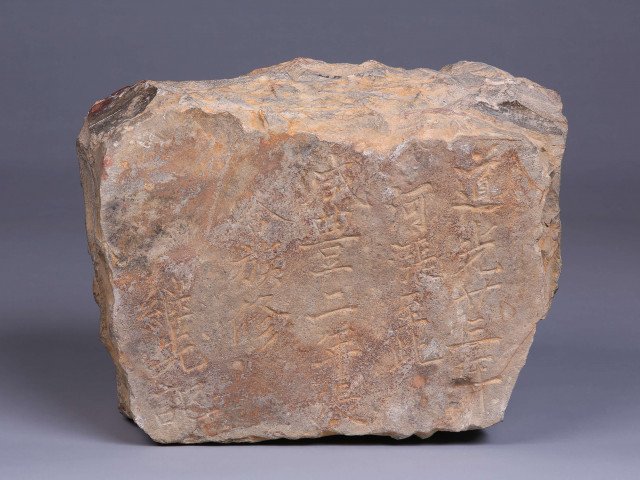Founded in 1955, the Yellow River Museum is the first river-themed museum in China concerning the Yellow River with its natural evolution, sociocultural development, progressing harnessing and regulation.
Run by four departments (the General Office, Exhibiting and Preserving Section, Education and Publicity Section and Culture and Study Section), the Yellow River Museum has evolved from a temporary river-harnessing expo over 60 years ago into a modern museum with multiple functions of collecting and preserving cultural relics, holding exhibitions and lectures, serving and enlightening the public, developing scientific research and academic exchange, offering sightseeing and recreational facilities etc. In June 2016, a new Institution was officially affiliated to the Museum, the Institute of Cultural Research and Exchange of the Yellow River.
The permanent exhibition of the museum consists of six parts:
- The Preface, where visitors can be greeted by a splendid scenic construct of the Hukou Waterfall, which is the most beautiful view of the Yellow River.
- The Basin Geography with the natural landscape, geographical features, basin climate and products of the Yellow River supplemented with scientific knowledge like the river’s formation and ecology in the ancient times.
- The Cradle of China, where visitors can explore the exotic Yellow River civilization and appreciate the cultural highlights during its continuous development for thousands of years.
- The Harnessing for Centuries, that presents the river’s running state throughout history including disasters it caused and people’s struggles against them.
- A New Chapter of River Harnessing and Way to Harmony, where visitors can learn about river-harnessing practice since 1946, the achievements of river protection and utilization under the administration of the Yellow River Conservancy Commission and river regulation in the new era.
As a non-profit organization, the museum has been working on getting people to know the Yellow River, popularizing scientific knowledge, promoting Chinese cultural prosperity, publicizing the accomplishments in river regulation, reminding the public to pay more attention to environmental protection and keep from natural disasters caused by out-of-control water.
With the hope of being a competent storyteller of the Yellow River, the museum will be fully exerting itself as it always does, trying to play a significant role in river protection and utilization, explore the value of the Yellow River culture in modern times and make greater contribution to its development and prosperity worldwide.
On November 3, 2020, an activity calling for the logo and mascot of the Yellow River organized by China Intangible Heritage Center and Press and Publicity Center of the Yellow River Conservancy Commission etc. was launched globally. Nearly one year later, the logo and mascot finally came into being after multiple selection among received 1829 works from 12 countries (regions). On October 30, 2021, the logo and mascot of the Yellow River was officially unveiled to the public in the Yellow River Museum. Along with the announcement, a press conference was held and the production of an animation about the personified mascot’s adventure was declared to start. more details at the following link.
Temporary exhibitions
Exhibition of Calligraphy and Paintings for the 70th Anniversary of River Harnessing (1946)
An exhibition of calligraphy and paintings was held in the Yellow River Museum in October, 2016. Covering calligraphy, traditional Chinese paintings, oil paintings by Chinese contemporary eminent painters and calligraphers like Wu Zuoren(吴作人), Fan Zeng(范曾), Ouyang Zhongshi (欧阳中石)etc. , 55 Yellow-River-themed works selected from the collection of the museum were on display to celebrate the 70th anniversary of river harnessing since the establishment of the Yellow River Conservancy Commission in 1946.
Exhibition of Folk Treasures Along the Yellow River
The exhibition opened in the Yellow River Museum in September 2020. About 30 regional art antiques collected and shared by private collectors, including pottery, porcelain, jade, paintings, were showcased, meeting and greeting the public for a month.























